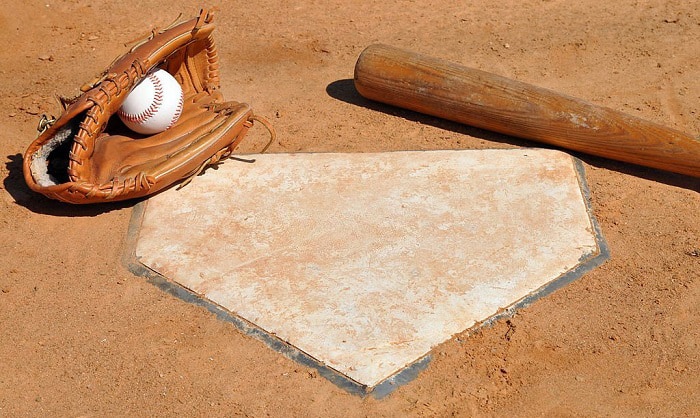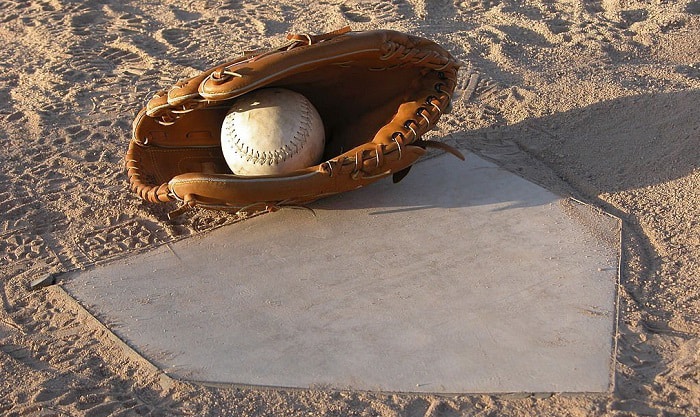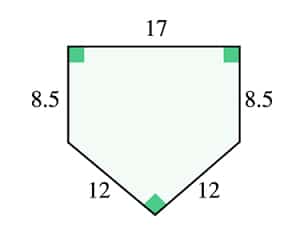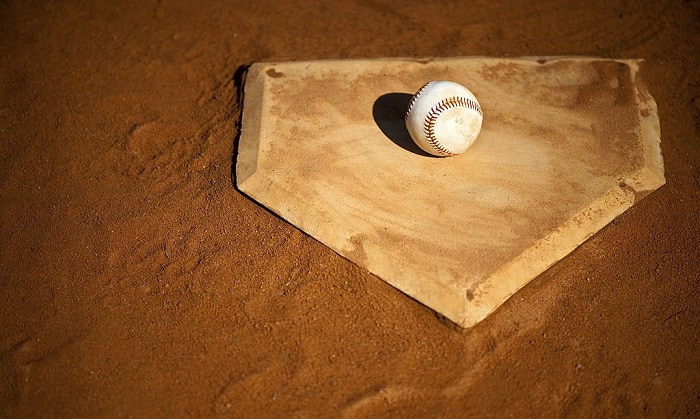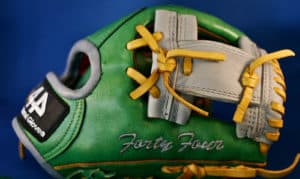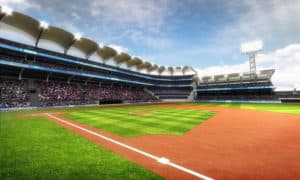Baseball is known for its multiple components that play a role in making the game rather complicated but fun and competitive. Among its components lies the home plate. Like all other objects, the home plate comes with its design and specificities.
As a baseball fan or player, you can best immerse yourself in and enjoy baseball if you know the specificities of the home plate.
What purpose does it serve in the first place? What makes it different from all the other bases? And, how many sides does the home plate in baseball have?
You will learn all of that as you navigate through this article. So, get on with it!
Contents
How Many Sides Does the Home Plate in Baseball Have?
The home plate is an irregular pentagon with two parallel sides, one primary side, and two sides intersecting at an angle. In total, it has 5 (sides).
Each side of the home-plate shares a 90-degree angle at the base (perpendicular).
The pentagonal shape of the home-plate serves as a clear marker or boundary for the strike zone, preventing the umpires and pitchers from getting confused.
In baseball home plate is a pentagon. Pentagon ABCDE also resembles a rectangle with only one isosceles triangle pointing down along its side.
However, its isosceles nature cannot satisfy an actual sizing since its mathematical formula is too unrealistic to obtain.
This particular five shape is home plate for current baseball games, but it has a history of more than a decade, starting during the 1900s.
What Are the Home Plate Dimension?
The home plate measures 17 inches on one side, 18.5 inches on the other two adjacent sides, and 12 inches on its last two sides intersecting to an angle.
Why Is the Home Plate Designed the Way It Is
The home plate is designed and shaped differently from the other bases to prevent one of its sides from laying on foul territory and parts of a baseball field. It would happen had the home plate on a baseball field been square.
Another reason which makes the home plate to be in its shape is the baseline. The baseline in the baseball field dimensions can best be perceived in the mind when implicated based on the intersection in the home plate.
The home plate not only got its name “home” and design apart from the other bases in baseball through years of historical, physical, and cultural negotiations.
Meanwhile, the nature of its plate recalls its original form- circular iron discs. Its being a plate also alludes to its placement being a flat protrusion on the dirt. Lastly, its rubber slabs are planted deep in the ground instead of just lying on top of the dirt, as most bases do.
What Is the Function of the Home Plate
The function and design of the home-plate fulfill a cultural significance as it does a technical one. In fact, the home plate primarily functions as an arbiter or a marker indicating the strike zone. A ball cannot get into a strike zone without first passing through the home plate.
As suggested by its name, “home,” the said plate serves as the starting point from where one leaves and must return. This role of the home-plate can best be exemplified, according to experts, when a player passes through it and is prompted to run.
Like a home, the home plate remains an open space for a player to return to after struggling to go around the baseball diamond.
Going home safely, signified by the touching of the plate, should feel rewarding, hence the scored run.
Where Is the Home Plate Located
The home plate, a whitened rubber slab, is the final base from various other bases that a runner must touch to score a run.
The home plate lies right beside the tip of the second base, completing the baseball diamond. The home plate covers the hitter, umpire, and catcher within its area.
Conclusion
Part of learning baseball is knowing its objects and their dimensions. One of the core objects or elements in baseball is the home plate. The idea that the home plate is unique from the rest of the other bases is common knowledge.
But exactly how many sides does the home plate in baseball have is a curiosity abound in the technicality of the game. As stated in the article, the home plate has two parallel sides, one base primary side, and two other sides meeting towards an angle: five (5) sides.
Comment down below to share your thoughts.

A powerful swing and the ball is flying across the field, just one hit, and we might never forget the thrill it brings. I do not know about you, but I never do. Every baseball game is the chance to compete with others and cooperate with your teammate. It is among my biggest passions.



